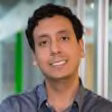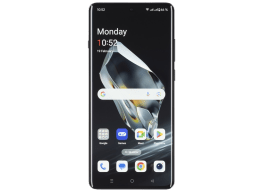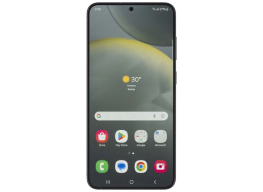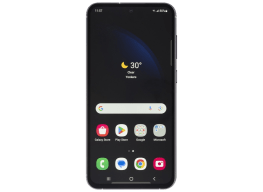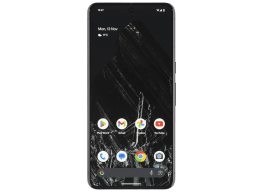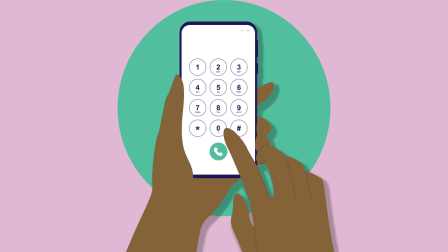Which iPhone Should You Buy?
From the diminutive iPhone SE to the new iPhone 15 Pro Max, there are lots of great options. Here's how to choose the best one for you.
When you shop through retailer links on our site, we may earn affiliate commissions. 100% of the fees we collect are used to support our nonprofit mission. Learn more.
The new Apple iPhone 15 lineup hits stores on Friday, but they’re not the only models you can buy.
In fact, if you don’t need or want the latest iPhone, going with a slightly older model is a great way to save money. Let’s face it: an iPhone that came out just a few years ago is still pretty good by anyone’s standard.
4.7-Inch iPhone SE ($429)
If you want the smallest and least expensive iPhone available, the iPhone SE is for you. It shares the same Apple A15 chip as the flagship iPhone 13 models introduced in the fall of 2021.
The small (by today’s standards) smartphone has just one 12-megapixel rear camera compared with the multi-lens setups on the other phones. But CR testers give it a Very Good score for still image and video quality, and the front selfie camera performs just as well.
The battery lasted 30 hours on one charge in CR’s labs, which is shorter than you find on larger phones these days. The model also lacks the MagSafe feature that lets you quickly connect to wireless chargers and other accessories, and uses Touch ID via a retro-y home button rather than supporting Face ID.
6.1-Inch iPhone 13 ($599), iPhone 14 ($699), or iPhone 15 ($799)
If you want a large but not huge iPhone at a modest cost, the standard iPhone line is where to look. These models cost $200 less than their Pro counterparts.
All have a 6.1-inch OLED display and a dual rear-camera system.
The iPhone 15 has a fair number of improvements compared with the older models, including the inclusion of the Dynamic Island that replaces the notch; a 48-megapixel camera compared with 12; a brighter display; and, of course, USB-C instead of Lightning (although data transfer is limited to Lightning-like USB 2.0 speeds).
The iPhone 15 also has Apple’s A16 Bionic chip (compared with the A15 Bionic of the 13 and 14 models), and works with a new service from Apple called Roadside Assistance, done in partnership with AAA. With this service, which is free for two years, you can do things like text AAA for help if you have a flat tire or locked yourself out of your car.
We don’t yet know how well the iPhone 15 does in our battery tests, but the 14 lasts 39 hours in our tests while the 13 lasts 32.5 hours.
6.1-Inch iPhone 15 Pro ($999)
Willing to spend a little more for Apple’s latest hardware but don’t need a jumbo-sized display? The 6.1-inch iPhone 15 Pro has Apple’s new A17 Pro chip (which Apple says should help with advanced gaming in particular); a 48-megapixel, 3x telephoto camera; and a body made out of titanium, which makes the 15 series the lightest Pro model phones yet.
It also has the same 120Hz high-refresh rate of the previous Pro models as well as the Dynamic Island.
Again, while we don’t yet have the iPhone 15 series in our labs, on paper at least the 15 Pro looks to be the choice if you want the latest tech but want something you can more comfortably use with one hand.
6.7-Inch iPhone 14 Plus ($899) or 15 Plus ($899)
Essentially, the Plus models of the iPhone are super-sized versions of the standard iPhone 14 and iPhone 15.
They both have a 6.7-inch, 60Hz (standard and not high-refresh-rate) display, which gives you more space for things like typing and reading email and online articles, playing video games, and, of course, watching streaming video from services like Netflix and YouTube. Instagram photos and videos look quite nice on the larger screen, too.
The iPhone 15 Plus does have a bit more going for it for that $100 price difference, however, including the Dynamic Island, a 48-megapixel camera that can zoom 2x (compared with the 14 Plus’s 12-megapixel, 1x zoom cameral), and USB-C.
iPhone Models by the Numbers
The table below spotlights the major differences between the phones. (If you’re reading this story on a smartphone, we recommend that you rotate it to landscape mode for a better view.)
| iPhone Model (Starting Price) | Display Size | Main Camera | Storage Options |
| SE ($429) | 4.7 inches | 12MP single, wide-angle camera | 64GB, 128GB, 256GB |
| 13 ($599) | 6.1 inches | 12MP wide-angle, ultra-wide-angle & 2x cameras | 128GB, 256GB, 512GB |
| 14 ($699) | 6.1 inches | 12MP wide-angle, ultra-wide-angle & 2x cameras | 128GB, 256GB, 512GB |
| 14 Plus ($799) | 6.7 inches | 12MP wide-angle, ultra-wide-angle & 2x cameras | 128GB, 256GB, 512GB |
| 15 ($799) | 6.1 inches | 48MP wide-angle, ultra-wide-angle & 2x camera | 128GB, 256GB, 512GB |
| 15 Plus ($999) | 6.7 inches | 48MP wide-angle, ultra-wide-angle & 2x camera | 128GB, 256GB, 512GB |
| 15 Pro ($999) | 6.1 inches | 48MP wide-angle, ultra-wide angle & 3x camera | 128GB, 256GB, 512GB, 1TB |
| 15 Pro Max ($1,199) | 6.7 inches | 48MP wide angle, ultra-wide angle, & 5x camera | 128GB, 256GB, 512GB, 1TB |
@consumerreports Viral videos claim Apple’s new flagship phone cracks easily. That’s not what our labs found. Learn more through the link in our bio. #bendgate #iphone15promax #techtok #newphone ♬ original sound - Consumer Reports
















